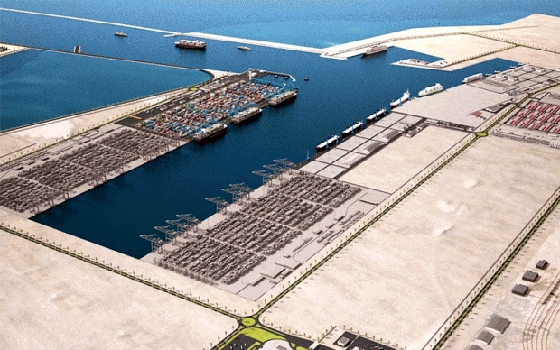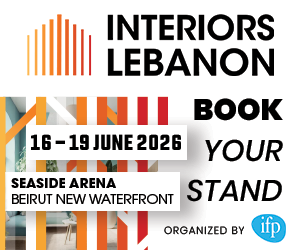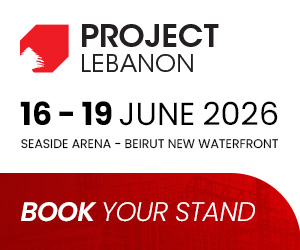The Middle East is undergoing a period of intense economic development that is characterized by the commitment of its countries’ respective governments to invest heavily in infrastructure that improves transport and trade links both domestically and internationally.
Maritime commerce is becoming increasingly important to Middle Eastern nations with ports situated along the Gulf coast as they occupy an enviably strategic position to accommodate growing shipping traffic from both Europe and Asia.
In order to maximize their potential, the operators of these ports, often in partnership with government, transport and development authorities, are conducting projects to expand and upgrade their facilities on a vast scale. Billions of dollars are being invested in outfitting existing ports with the latest in cargo container processing and storage technology, as well as breaking ground on expansive new container terminals.
This is without mentioning the construction of entirely new ports being built from the ground up as international shipping traffic increases throughout the Middle
East’s coastal regions. The speed, surety and scale of these mega-port development ventures underline the importance of the Middle East’s role in the future of maritime commerce.
Oman: SOHAR Port and Freezone
Current capacity: 800,000 TEUs per annum
Projected total capacity: 6 million TEUs per annum
Projected completion date: Various expansions underway, OICT’s Terminal D commencement due for 2018
Investment: $15 billion to date
The SOHAR Port and Freezone is a deep-sea port and freezone in the Sultanate of Oman, managed by SOHAR Industrial Port Company (SIPC), an equal ownership joint venture between Hutchison Port Holdings (HPH) and the Sultanate of Oman. It is one of the fastest growing port and freezone developments anywhere in the world, thanks to its enviable geographical location and interconnectivity with Oman’s road, air and rail transport infrastructure.
The port is strategically located outside the Strait of Hormuz in the Gulf of Oman, approximately 200 kilometers from Muscat and 160 kilometers from Dubai with extensive road system and rail connections planned for the near future. This places it directly in the center of global trade routes between Europe and Asia, which has led to its explosive growth rate attracting more than $15 billion in investments with a raft of new partnerships and expansions in the pipeline. These include a $60 million deal with a UK led consortium that will see SOHAR house the largest rare earth metal plant of its kind outside of China.
Automotive assembly, oil refinement and dedicated agricultural storage are just some of the many industries looking to secure plots in the freezone for their operations as well as securing immediate access to the port facilities.
The Oman International Container Terminal (OICT) is also located within the port and it has quickly absorbed the shipping traffic from Muscat after that port recently closed its commercial shipping operations.
As SOHAR attracts rapidly growing cargo volumes from across Europe and Asia, OICT’s capacity is being raised to handle the new influx. Fast tracked development of Terminal C along with the construction of the new Terminal D – due to begin its initial construction phase in early 2018 – will eventually raise OICT’s annual capacity from 800,000 TEUs to an estimated 6 million. HPH expects to invest a total of $303m by 2019, including the $183.5m already invested in OICT by the end of 2014. These sizeable allocated funds aptly demonstrate the range and scale of opportunities afforded to SOHAR due to the benefits offered by its commitment to adopting the best technological and managerial approaches to modern maritime commerce.
Qatar: Hamad
Greenfield Port project
Current capacity: Under construction
Projected total capacity: 6 million TEU per annum
Projected completion date: December 2016 Terminal 1
Investment: $7.4 billion
Representing one of the largest infrastructure projects in the country, the Hamad Greenfield Port project is one of the Qatari Government’s many initiatives to diversify away from oil and gas through the development of efficient and commercially viable mega-projects.
As Qatar is currently experiencing significant growth in the importation of raw materials and goods, a large scale, technologically advanced commercial port facility strategically located outside the capital city of Doha will quickly become a vital component of Qatar’s economic infrastructure.
The port will be developed in multiple phases to cover an area of 26.5km, featuring three container terminals with a combined capacity to process 6 million TEU every year. These terminals will be multi-purpose facilities with the capacity to store over 1 million tons of bulk grain cargo, 500,000 vehicles and 37,000 livestock per year. The first container terminal will bring 2m TEU capacity on line when it opens in December 2016, and will be supported by an adjacent logistics zone for light manufacturing and supply chain management.
The port will also incorporate a base for the Qatar Emiri Naval Forces providing berthing for Qatar’s Navy and visiting naval vessels from around the world as well as technical support, comprehensive logistic facilities, material support accommodation and recreational services for almost 4,000 Qatari servicemen.
Dubai: Container Terminal
3 at Jebel Ali Port
Current capacity: 15 million TEUs per annum
Projected total capacity: 19 million TEUs per annum
Projected completion date: late 2015
Investment: $850 million
Dubai’s Jebel Ali Port opened its third container terminal in October 2014 when it became partially operational. After six months of trial operations, the terminal has successfully increased capacity and efficiency at Jebel Ali thanks to its 18-metre draft and ultra-modern equipment and infrastructure that now gives the port the ability to accommodate up to 10 Ultra Large Container Ships (ULCS) at the same time. Innovation and modernity have become bywords for Terminal 3, as it currently utilizes 19 quay cranes that are among the largest and most technologically sophisticated in the world. All of the Automated Rail Mounted Gantry cranes (ARMGs) can be remotely operated from the quay’s operational command center, improving the efficiency of the terminal’s operation while also providing its employees with a much safer working environment.
Terminal 3 will be the world’s largest semi-automated terminal, providing operational efficiencies for customers, comfortable and safe working conditions for our people and environmental benefits by reducing our carbon footprint. Terminal 3 will be 30% more carbon efficient than a traditional terminal.
Once Terminal 3 becomes fully operational this year it is expected to increase the annual capacity of Jebel Ali by 4 million TEUs and further decrease congestion and load times.
Saudi Arabia: Saudi Global Ports (SGP) Container Terminal at Dammam King Abdul Aziz Port
Current capacity: 5 million TEUs per annum
Projected total capacity: 6.8 million TEUs per annum
Projected completion date: Constructed and opened April 2015, still under further development
Investment: Approx $500 million
In late April, Saudi Global Ports (SGP) – a joint-venture company between the country’s Public Investment Fund (PIF) and Singapore-based terminal operator PSA International – opened its second container terminal at Dammam’s King Abdul Aziz Port, the largest port on the Arabian Gulf and second only to the Port of Jeddah in shipping traffic in the Middle East and North Africa.
This second container terminal has already begun to receive ships but is currently undergoing further development stages that will see its total capacity rise to 1.8 million TEUs annually once complete. These developments include the installation of additional quay loading/offloading equipment and cutting-edge technological support systems to aid in the administration and smooth running of the container terminal’s daily operations. Once finished, the terminal will boast a 3937-foot quay complete with 12 quay cranes at various levels of automation.
Leading shipping industry figures have noted the huge spike in maritime traffic at Dammam, including Capt. Leslie Reis, CEO of Orient Express Lines who said in a recent interview that the second terminal’s commencement of operations would bring much needed capacity to the region, alleviating the rising congestion rates experienced by the port’s users in the past three years.
IQPC Middle East
8 June

















































































